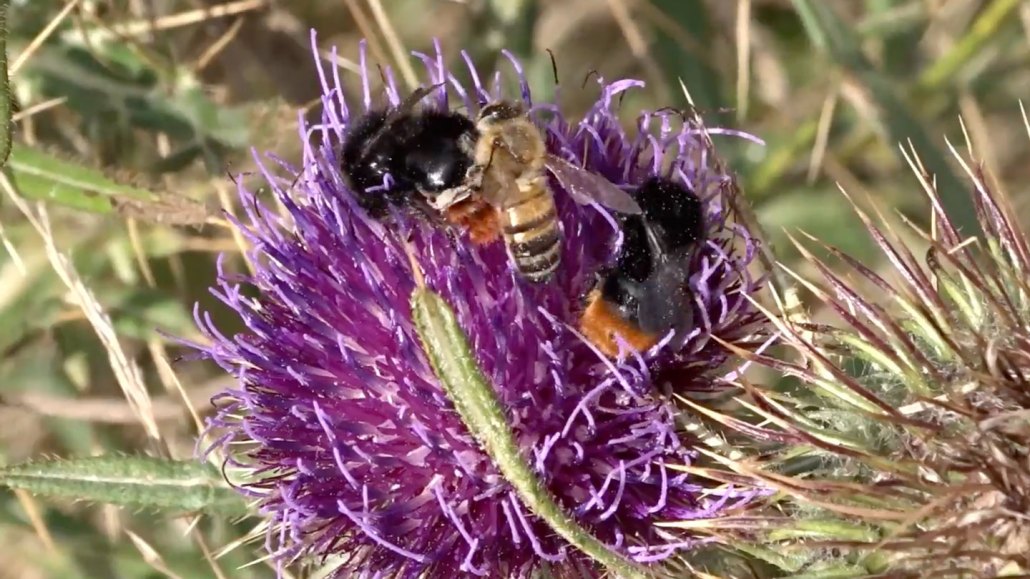
Honeybees are known pollen pigs, as evidenced by this honeybee in Italy observed stealing pollen from these bumblebees.
Londei and G. Marzi/Apidologie 2023
Honeybees rely on plant pollen as a protein-packed food source. And some are even willing to steal from other bees to get it.
Pollen stealing has been seen before, in the United States. But now, researchers in Italy have also observed honeybees snatching pollen off the backs of bumblebees. The observations, published December 21 in Apidologie, are among the most extensive documentation of bee-on-bee larceny to date.
On a summer trip in 2019 to Mount Antola, in the northern Italian region of Liguria, independent naturalists Tiziano Londei and Giuliana Marzi, both based in Milan, recorded video of what they thought were honeybees (Apis mellifera) trying to push bumblebees off the flower of a woolly thistle (Cirsium eriophorum). A closer look at the video, however, revealed that this wasn’t a case of competitive harassment — it was a full-blown robbery.
As red-tailed bumblebees (Bombus lapidarius) scrounged around the flowers for nectar and pollen, some pollen grains stuck to their hairy bodies (SN: 9/6/17). Londei and Marzi witnessed honeybees shamelessly snagging this pollen for themselves. The thieves tended to target male bumblebees slightly more than females, as the males appeared less bothered by the pilfering (though even females didn’t react aggressively).
“Honeybees are well-known as pollen pigs,” says Avery Russell, a biologist at Missouri State University in Springfield who was not involved in the study. So stealing pollen from the bodies of bumblebees, he says, “doesn’t seem like a far stretch.”
To see how common the criminality is, the researchers went back to the scene twice in the following three years and also observed bees at two other sites about 25 kilometers away. Honeybees at these other sites were not seen stealing from bumblebees, but bees at the first site continued their larcenous ways year after year. For instance, honeybees collected pollen from only three of the 31 flowers the researchers observed in 2021, but stole from 28 of the available 66 bumblebees.
Scrutinizing the differences between these sites, the researchers suspect honeybees resort to theft in areas where pollen is hard for them to get from flowers (the honeybees struggled to collect pollen from the woolly thistle), but where there are plenty of other bees around.
Pollen stealing by honeybees has previously been observed only in North America, first in Kansas and then later in California and Indiana. Discovering the behavior in Italy suggests this may be a global crime spree. Russell says it would be nice to next learn whether pollen theft negatively impacts bumblebees, or the flowers they pollinate. He’s also curious if other bee species ever steal pollen, too. “We do notice that in the hive, bumblebees will nibble on each other’s pollen baskets,” he says.






